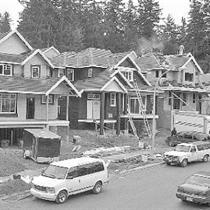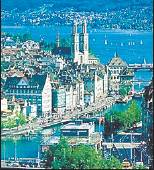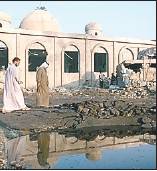Other
Archive for April, 2006
Japan to raise interest rates that can cause markets to suffer
Wednesday, April 12th, 2006End of easy money likely to have adverse impact on ‘carry trade’
Hans Greimel
Sun
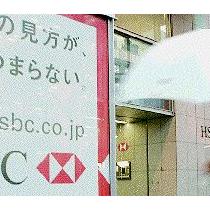
A pedestrian passes by an HSBC Tokyo branch office on Tuesday. For five years, Bank of Japan’s soon-to-end zero interest rate policy helped pump up economies, stocks and foreign currencies. Photograph by : Koji Sasahara, Associated Press
TOKYO — Imagine a bank that doles out loans but charges no interest. For five years, that’s what Japan has been for the world economy — an all-purpose lender with next-to-nothing borrowing costs thanks to the central bank’s zero interest rate policy.
The trend helped pump up economies, stocks and foreign currencies from the United States to Australia. But concerns are mounting it could all unravel on a global scale with the Bank of Japan’s decision last month to finally tighten the taps on all the easy money.
At risk is a flow of funds known as the carry trade, an investment strategy that has lured people to Japan to borrow money on the cheap and invest it overseas for higher returns.
No one is sure how much money is at stake, but economists say stopping the flow could prompt global investors to sell their holdings of stocks, bonds and other assets outside Japan, particularly in the United States.
That could weaken the U.S. dollar, push up yields on U.S. Treasury bonds and boost interest rates in the U.S. and Europe.
“When it starts to reverse, it could lead to some real shock waves in the market,” warned Kenneth Courtis, the Asia vice-chairman of Goldman Sachs Ltd. in Tokyo.
The carry trade is driven by the gap between near-zero per cent interest rates in Japan and higher rates elsewhere in the world.
In an attempt to bail the world’s second-largest economy out of more than a decade of doldrums, the BOJ implemented a super-loose monetary policy five years ago to make it easy for companies to borrow funds.
Not only did the central bank hold interest rates close to zero per cent, it flooded commercial banks with about 35 trillion yen ($338 billion Cdn) in daily liquidity, nearly six times the amount banks actually needed, by many economists’ estimates.
It didn’t take long for global investors to start exploiting all this cash sloshing around at close to zero per cent.
They borrowed money from Japanese banks and invested it overseas for higher returns. In the 12-country Euro zone, the key interest rate is 2.5 per cent, while the U.S. benchmark rates are now 4.75 per cent.
Other popular destinations have been New Zealand, where the key interest rate is 7.25 per cent, and Iceland, where the central bank recently hiked rates to 11.5 per cent.
On March 9, however, the BOJ declared Japan’s economy is back on track and soon ready for higher interest rates — a trend that will squeeze the profit margin, or spread, on carry trades, making them riskier and less attractive.
It’s hard to know to what degree — and where — investors will move their money, but many experts believe that U.S. markets could suffer as a result.
© The Vancouver Sun 2006
After selling your home, leave info when you move out
Sunday, April 9th, 2006STYLE FOR LIVING: Things to help the buyer of your home
LYNDA REEVES
Province
Once, when I bought a house, the former owner taught me how to leave a house in a way that will make its new owner feel grateful and touched.
First, it was clean. Incredibly clean, right down to the kitchen drawers and shelves, ovens, fridge from the basement to the attic. The windows and mirrors sparkled. Even the broadloom had been cleaned. It felt brand new, even though it was an old house.
All the nail holes where her pictures had been were patched and the walls repainted. Fresh toilet paper and paper towels waited in their holders.
In the basement she had left a shelf of things that I would need. There were lightbulbs, paint cans, labelled by room, firewood, parts for appliances, hardware that matched each door and window, leftover shelves and pins for the bookcases, shutters, bathroom tiles, baseboard, mouldings and trim. She even left extra pieces of broadloom in case I needed to patch something.
In the bathrooms and bedrooms, she left me some privacy in the form of drapes on the windows. A note asked me to return them to her once mine arrived.
On the kitchen counter was a box filled with the things I would need to help make my new house a home. It was so kind and thoughtful and, as I came to learn, incredibly helpful.
There was a piece of cardboard for each room, with a dab of paint from the walls along with the paint name, number and manufacturer. Then there were lists. What kind of furnace, when it was installed and the name and number of the company that had serviced it and when.
The trades who had worked in the house were listed with contact information, including window washers, chimney cleaners and eaves-trough experts. She provided the name of the sewing room who had made the drapes and the carpet installer she really liked.
She noted her favourite stores and services. She provided garbage-pickup calendars. And she left instructions for when to turn on the sprinkler system and which trees needed spraying in the spring.
There were the blueprints from her renovation, before and after photos of every room, and of the garden in each season. She listed what was planted, since it was winter and I couldn’t tell.
Of course, there were instruction and warranty packages for every appliance.
She told me the things that she was planning to do next, had she stayed in the house: Install a new sprinkler system because the old one didn’t reach many of the flowerbeds, for example. Of course I forgot about that list until my flowers started to dry up. After that, I paid attention to the list and did most of what she had planned.
And finally, there was the welcome package in my fridge. In it were the breakfast basics you never have on your first morning in your new house. Plus bottled water, great snacks and cold drinks for the moving crew.
I could not believe the work she had gone to to make me feel welcome. I remember hoping she would receive the same gift at the other end, knowing it was unlikely. Who would do all this? Someone who understands how it feels to love and care for a house and hope that the next person will do the same.
I have no plans to move, and yet I find myself collecting every warranty and spare tile, and bit of extra hardware. I imagine it must feel great to leave things as she did and if I’m ever a seller, I have to at least try to do the same.
Lynda Reeves is the host of House &
Home with Lynda Reeves, Monday and
Friday on the Global Television Network
and Saturday on PRIME.
Vancouver is No. 15 in the world in Lonely Planet survey of 200 cities
Sunday, April 9th, 2006JOSEPH KULA
Province
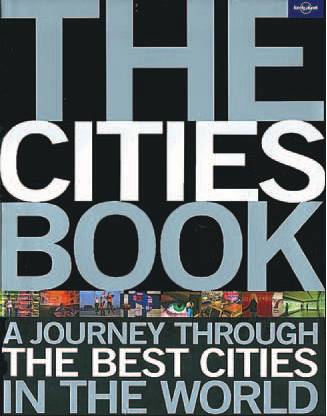
So, how do you think Vancouver rated in Lonely Planet’s massive The Cities Book — A Journey Through the Best Cities in the World (Raincoast)?
Very nicely, thank you, placing 15th out of 200 cities around the globe. We even beat out rivals such as Rio de Janiero (17), our sister city of Montréal (20), Florence (27), Krakow (30), Athens (38), Venice (40) and Los Angeles (49).
The other Canadian cities that made the list are Toronto (31) and Quebec City (95).
And No. 200? It’s Ashgabat (The City of Love, in Arabic). Haven’t heard of it? Neither have I, but this city in Turkmenistan is described as one of the oddest.
Each city gets a two-page spread and, refreshingly, the photos used aren’t your predictable picture-postcard variety.
The text also is not the usual pablum dished up by guidebooks. Instead, we get the following gems (here we use Vancouver as an example):
Typical Vancouverite: “With the knowledge that they live in an all-round ‘top foreign city’ known for its ‘best quality of life,’ have a laid-back mind-set, happy to be part of a pioneering Pacific Rim city where marijuana is tolerated and the foodie scene has exploded.”
Strengths (among others): Vancouver Art Gallery, Wreck Beach, Stanley Park, Museum of Anthropology and Coal Harbour seawalk.
Weaknesses: The rain — 170 days a year; house prices; blocked-off streets for film sets.
Gold star: Granville Island (need we say more).
Cityspeak (a little bit of editorializing): “Safe-injection sites — controlling drug use or promoting drug abuse.”
Starring role in . . .
(somewhat dated): The X Files, Double Jeopardy, Douglas Coupland novels.
Import: Hong Kong/ Chinese citizens and money; Hollywood productions.
Export: Greenpeace, Generation X, k.d. lang, Michael J. Fox, Pamela Anderson — you get the picture.
All in all, it fairly profiles the character of our city, albeit in simplistic terms.
So, which city is No. 1 in Lonely Planet’s eyes? You guessed it. It’s Paris, the City of Light.
It’s not surprising, considering that Paris draws more tourists than any other city in the world and that France is the No. 1 country for tourism.
If you want to see how your favourite city rates, be prepared to shell out $65 for the privilege.
It’s the cheapest tour of the world’s finest cities you’ll ever find.

